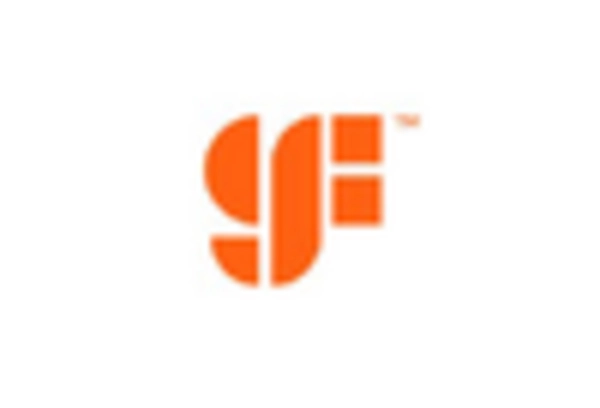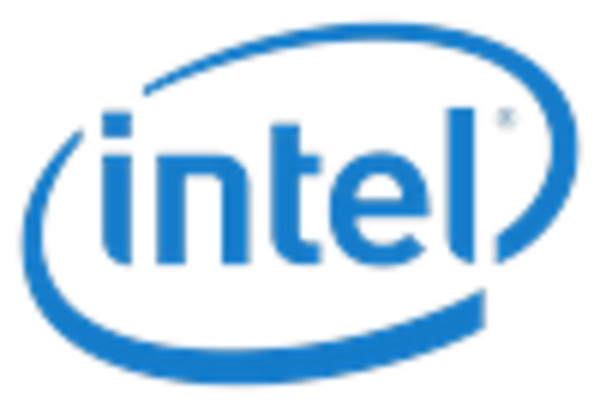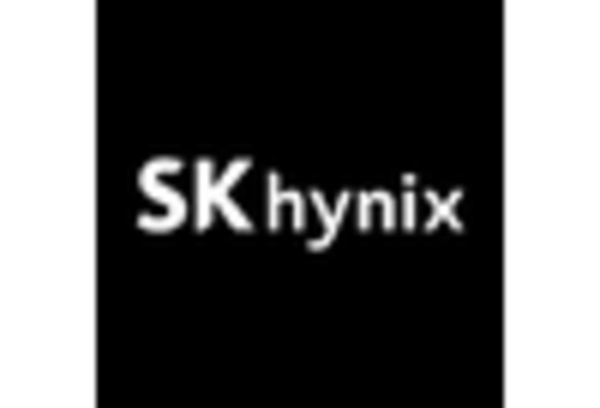Advancements in 5G Technology
The rollout of 5G technology across Europe is poised to be a significant catalyst for the semiconductor materials market. With the anticipated increase in data transmission speeds and connectivity, there is a growing need for advanced semiconductor materials that can support the infrastructure required for 5G networks. By 2025, the 5G market is expected to expand rapidly, with investments exceeding €50 billion in network infrastructure. This expansion will drive demand for high-frequency semiconductor materials, which are essential for the development of 5G-enabled devices and applications. As telecommunications companies invest in upgrading their networks, the semiconductor materials market stands to benefit from the heightened demand for innovative materials that can meet the rigorous performance standards of 5G technology.
Shift Towards Electric Vehicles
The transition to electric vehicles (EVs) is significantly impacting the semiconductor materials market in Europe. As the automotive sector pivots towards electrification, the demand for advanced semiconductor materials is expected to surge. In 2025, the EV market in Europe is projected to grow by over 20%, necessitating high-performance chips for battery management systems, power electronics, and autonomous driving technologies. This shift is prompting automotive manufacturers to seek innovative semiconductor solutions, thereby driving investments in material development. The semiconductor materials market is likely to experience robust growth as it adapts to the unique requirements of the EV sector, positioning itself as a critical enabler of sustainable transportation.
Focus on Renewable Energy Solutions
The increasing emphasis on renewable energy solutions in Europe is influencing the semiconductor materials market. As countries strive to meet ambitious climate goals, the demand for semiconductor materials used in solar panels, wind turbines, and energy storage systems is on the rise. In 2025, the renewable energy sector is projected to grow by approximately 15%, creating a substantial market for semiconductor materials that enhance energy efficiency and performance. This trend is prompting manufacturers to invest in research and development of specialized materials that can withstand harsh environmental conditions while maintaining optimal performance. The semiconductor materials market is thus likely to experience growth as it aligns with the broader shift towards sustainable energy solutions.
Rising Demand for Consumer Electronics
The increasing demand for consumer electronics in Europe is a primary driver for the semiconductor materials market. As households and businesses adopt smart devices, the need for advanced semiconductor materials intensifies. In 2025, the consumer electronics sector is projected to grow by approximately 5.5%, leading to a corresponding rise in semiconductor material requirements. This growth is fueled by trends such as remote work and digital entertainment, which necessitate high-performance chips. Consequently, manufacturers are compelled to innovate and enhance their semiconductor materials to meet the evolving needs of the market. The semiconductor materials market is thus positioned to benefit from this surge in demand, as companies strive to produce more efficient and powerful electronic components.
Government Support for Semiconductor Innovation
European governments are increasingly recognizing the strategic importance of the semiconductor materials market. Initiatives aimed at fostering innovation and research in semiconductor technologies are gaining momentum. For instance, the European Commission has allocated substantial funding to support R&D in semiconductor materials, with an investment of over €1 billion planned for the next five years. This financial backing is expected to stimulate advancements in material science, leading to the development of next-generation semiconductors. Furthermore, government policies promoting collaboration between academia and industry are likely to enhance the competitive landscape, driving growth in the semiconductor materials market. Such support not only encourages innovation but also aims to reduce dependency on non-European suppliers.















Leave a Comment